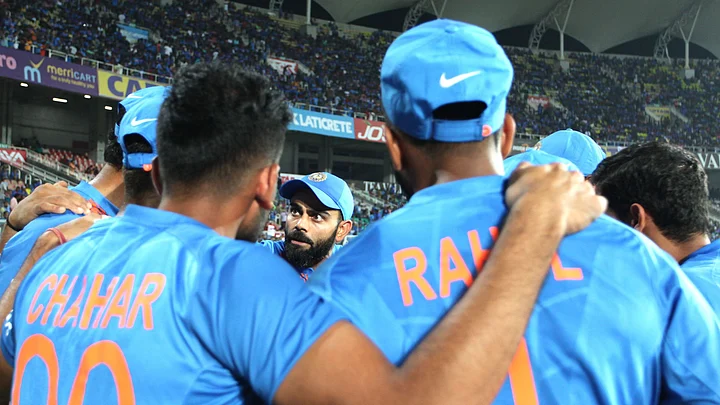Season after season, as the Indian Premier League nears, just one question does the rounds - will it finally be the year when Royal Challengers Bangalore break the shackles? Will Virat Kohli’s side, a side bolstered by some of the biggest hitters in the world, finally be able to live up to its label of being a dangerous outfit? Clearly, a franchise that has had players like Kohli and AB de Villiers and Chris Gayle and KL Rahul should have better results to show.
The reason this analogy comes up today is because Team India’s T20I woes while batting first and RCB’s general issues have a pattern - both have some of the most fiery names in the batting line-up and both teams bat deep, yet the inability to manage the batters well often leads to their downfall. Having seven or 10 men who can wield the willow is not the key; knowing how to utilize the resources well is what leads to success.
Set Pattern for Batters
The Men in Blue’s strategy in T20Is has been relatively simple - build up momentum early on in the powerplay overs courtesy a top-order that has phenomenal numbers in ODIs but might not have the same impact in the shortest format. Since the inception of T20I cricket, India’s top three bat with a strike rate of just 131.64 - below nations like Australia and England, and even though they have the best average (of 32.07) - the best among all Test playing nations - the inability to play at a faster rate often leaves the middle order with much to handle.
Numbers 4 to 7 for India bat with a strike rate of 130, which falls to 129 when they are batting first. It is not that the side have been lacking in power-hitters down the order, it is the inability to utilize the power-hitters optimally while going in with an ODI mindset of first piling on runs and then accelerating that sees India languish at the number 5 spot in the T20I rankings.
Dube Promoted Up The Order
Shivam Dube’s promotion up the order to number three, then, in the second T20I against West Indies was a pleasant departure from a side that has constantly gone ahead with the tried and the tested.
Though the all-rounder himself suggested that he was pushed over Kohli to tackle the slow left arm orthodox spinner Khary Pierre, it was a cleverly chalked out plan to meander away from the settled and spring a surprise, just like MS Dhoni had done when he pushed Deepak Chahar and Harbhajan Singh up the order last year when the side were chasing 154 against Kings XI Punjab. Then, Chennai Super Kings, tottering at 27 for 3, needed a desperate move to get over the line, and the promotion of the two over regular batters, proved fruitful.
Years ago, when Kolkata Knight Riders tried a similar tactic with Sunil Narine, it was termed madness. That madness, however, turned to instant success as the West Indian started giving his team vital starts in no time.
Though his average with the bat in the last three seasons has never been over 23, his strike rates of 172.30, 189.89 and 166.27 in 2017, 2018 and 2019 respectively ensures that he gets the job done more often than not.
This was the kind of madness Kohli was after, and though the promotion of Dube could have been given a logical cricketing reason, the Indian management, and it is clear, were rather looking to invert their set-in-stone approach as they looked to better their numbers batting first.
A Successful Experiment
Batting with a simple approach of waiting for the ball to come to him, Dube, with a high backlift, took time to settle in, batting at 12 off 14, but unleashed soon after. Primarily a leg-side hitter, the West Indian bowlers went into “panic mode” as they suddenly erred in strategy against him, bowling close to Dube’s body. His batting might not have been the most aesthetically pleasing - there were ugly hoicks, he almost fell off his feet while trying to smash the slower ball and his innings ended as he was trying to go for too many but a quickfire 54 off 30 with the help of three fours and four sixes had ensured that he had done his job.
At the other end, Rohit Sharma, Rahul, Kohli, Shreyas Iyer and Ravindra Jadeja combined to score 54 in 58 on a sluggish track, which only puts Dube’s innings in perspective.
Dhoni, then, had explained that by sending in a player above his regular position, the bowlers start throwing everything at him to get him out quickly, which can often work in the side’s favour. Though India ended up on the losing side at Thiruvananthapuram largely due to the bowling and the fielding efforts, by treading into the unknown, they might just have cracked the code for success in T20Is.
